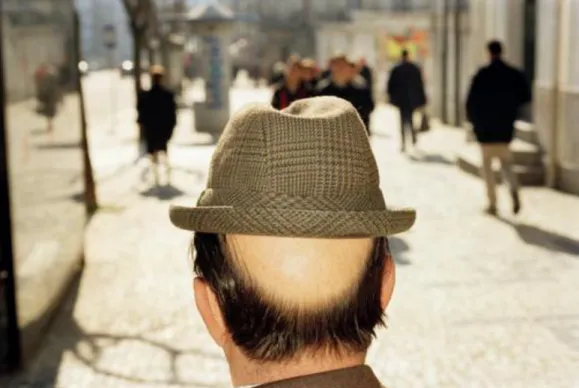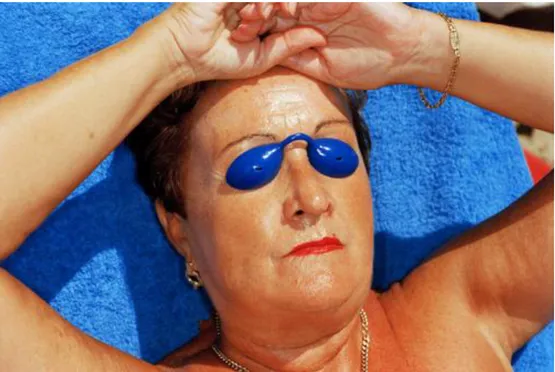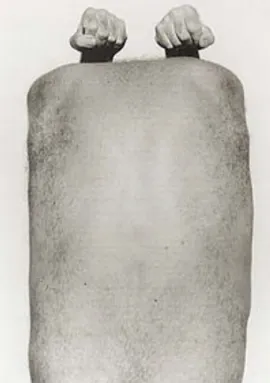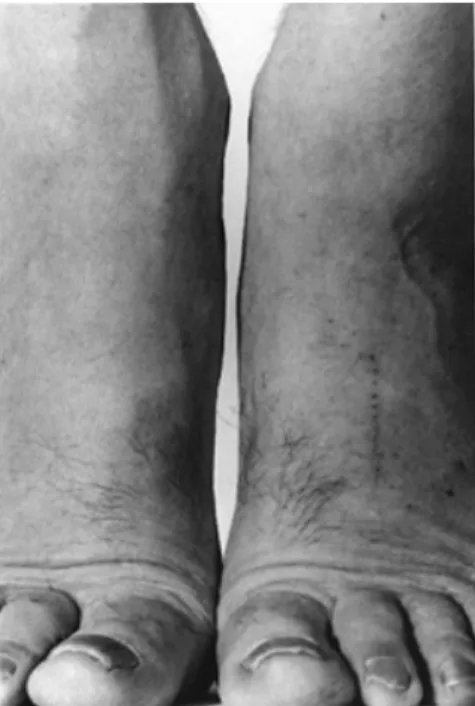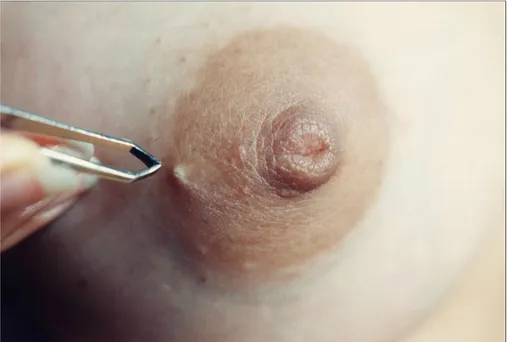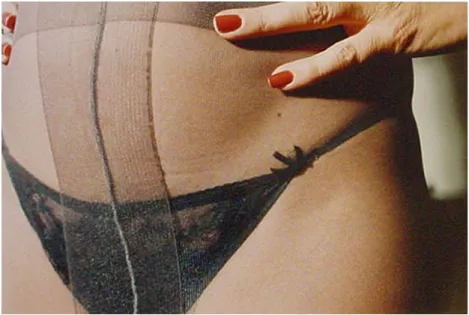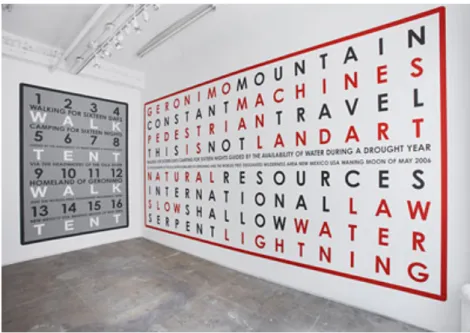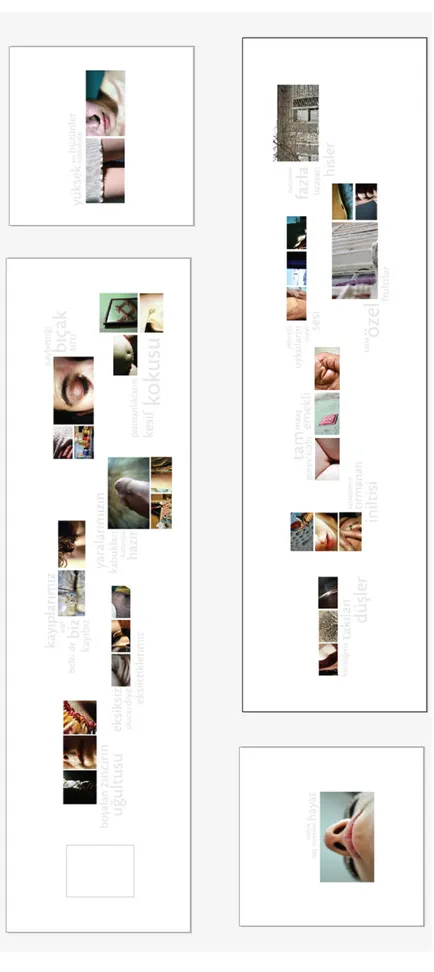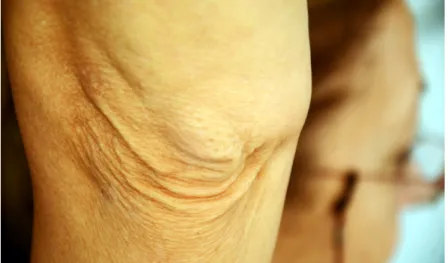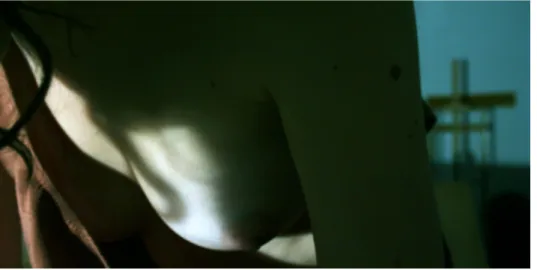HALF ASLEEP, WINDED LOSSES:
A VISUAL SURVEY ON PHOTOGRAPHY, MEMORY AND MEANING
A Master’s Thesis by BEGÜM BİLGENOĞLU Department of Graphic Design İhsanDoğramacıBilkent University May 2012
To my beloved family
HALF ASLEEP, WINDED LOSSES:
A VISUAL SURVEY ON PHOTOGRAPHY, MEMORY AND MEANING
Graduate School of Economics and Social Sciences
of
İhsan Doğramacı Bilkent University by BEGÜM BİLGENOĞLU
In Partial Fulfilment of the Requirements for the Degree of MASTER OF FINE ARTS
in
THE DEPARTMENT OF
GRAPHIC DESIGN
İHSAN DOĞRAMACI BİLKENT UNIVERSITY ANKARA
May 2012
___________________________ Assist.Prof.Dr. Dilek Kaya Supervisor
I certify that I have read this thesis and in my opinion it is fully adequate, in scope and in quality a thesis for the degree of Master of Fine Arts in Graphic Design.
___________________________ Jülide Akşiyote
Co-‐‑supervisor
I certify that I have read this thesis and in my opinion it is fully adequate, in scope and in quality a thesis for the degree of Master of Fine Arts in Graphic Design.
___________________________ Dr. Özlem Özkal
Examining Commitee Member
I certify that I have read this thesis and in my opinion it is fully adequate, in scope and in quality a thesis for the degree of Master of Fine Arts in Graphic Design.
___________________________ Assist. Prof. Dr. Ersan Ocak Examining Commitee Member
Approval of the Graduate School of Economicsand Social Sciences
___________________________ Prof.Dr. Erdal Erel
Director
ABSTRACT
HALF ASLEEP, WINDED LOSSES:
A VISUAL SURVEY ON PHOTOGRAPHY, MEMORY AND MEANING Bilgenoğlu, Begüm
M.F.A., Department of Graphic Design Supervisor: Assist. Prof. Dr. Dilek Kaya
Co-‐‑Supervisor: Jülide Akşiyote May 2012
As Henry Bergson points out, memory images that we have stored in our minds throughout our lives trigger our past experiences and help form the moment we live in. This thesis is an attempt to challenge my perception about the issues that are bodily disturbing for me in my memories. It is related with the level of intimacy and the blurred line between private and public that makes me uncomfortable. This thesis explores this point through a photo-‐‑text project consisting of different sets of photographs that trigger my own memories through wandering on the body and outside.
The project aims to activate in the viewer an inner journey with the help of close-‐‑up body images and photographs taken outside. These images, which come from different time, space and bodies, are grouped into sets that form new wholes. These visual sets are accompanied by lines from various unpublished poems in order to simulate the audience to activate them with their own memories and create new readings.
ÖZET
YARIM UYKULAR, SOLUKSUZ KAYIPLAR:
FOTOĞRAF, BELLEK VE ANLAM ÜZERİNE GÖRSEL BİR YOLCULUK Bilgenoğlu, Begüm
Yüksek Lisans, Grafik Tasarım Bölümü Tez Yöneticisi: Yrd. Doç. Dr. Dilek Kaya
Ortak Tez Yöneticisi: Jülide Akşiyote Mayıs 2012
Henry Bergson'ʹun da değindiği gibi, hayatımız boyunca kaydettiğimiz bellek imgeleri geçmiş deneyimlerimizi harekete geçirerek şimdiki zamanı şekillendirmemize yardımcı olur. Bu tez, bedenin sergilenişi ve mahremiyeti ile ilgili olarak hafızamda yer etmiş rahatsızlık verici imgelere şimdide yeni bir bakış üretme çabasıdır. Tez, farklı zaman ve mekanlarda, beden üzerinde ve beden dışarısında gezinerek çekilmiş yakın çekim fotoğraflar ve bunlara eşlik eden metinlerden oluşan fotoğraf-‐‑metin setleri aracılığıyla, bu yeni bakış açısını araştırmakta ve görünür kılmaktadır.
Tezin odağındaki görsel proje, yakın çekim beden görüntüleri ve dışarıda çekilmiş fotograflar aracılığıyla izleyiciyi içsel bir yolculkuğa davet etmektedir. Farklı zaman, mekan ve bendenlerden gelen görüntğüler yeni bir bütün oluşturacak şekilde renk, doku, ve şekil bağlamında gruplandırılmıştır. Ortaya çıkan setler yayınlanmamış şiirlerden alınan dizelerle birleştirilmiştir. Bu şekilde, izleyici uyarılmakta ve izleyicinin görüntüleri kendi belleğiyle harekete geçirerek yeni okumalar oluşturması amaçlanmaktadır.
ACKNOWLEDGEMENTS
I would like to express my appreciation to my supervisor Assist.Prof.Dr. Dilek Kaya for her guidance, contributions and patience throughout this study.I would like to express my deepest gratitude to my co-‐‑ advisor Instructor Jülide Akşiyote for her continuous encouragements, constructive critiques and contributions throughout the preperation of this work. It has been a pleasure tobe their student and to work with them.
I would also express my appeciation Dr. Özlem Özkal, Assist. Prof. Dr. Ersan Ocak for their suggestions and comments throughout my graduate
studies. I would like to thank Funda Şenova Tunalı for her comments.
I am thankful my friends Begüm Çiftci, Zeynep Engin, Gizem Akgülgil, Alev
Değim, Nazlı Karayel, Akın Canko for everything they have done, their
contunious encouragements and patience. Also I would like to thank to my friends Baran Akkuş, Candan İşcan, Defne Kırmızı, Serdar Bilici for their
I am grateful to my beloved family members Sevil Bilgenoğlu, İhsan Bilgenoğlu, Fatma Satıroğlu, İsmail Satıroğlu, my sister Burcu Bilgenoglu
Umur, my cousin Melike Gülsayın for their invaluable support, patiance and
contributions for my thesis and also my life. Also I would like to thank Eryiğit Umur, Berna Umur, Ülkü Umur, Bilgin Turan, Alaatin Umur for
their encouragements .
I would like to thank to my fiance Mehmet Satıroğlu for his endless patience, contiributions and encouragements throughout the study and every aspect of my life.
TABLE OF CONTENTS
ABSTRACT ... iii ÖZET ... iv ACKNOWLEDGEMENTS ... vTABLE OF CONTENTS ... vii
LIST OF FIGURES ... ix
CHAPTER 1: INTRODUCTION ... 1
CHAPTER 2: REVIEW OF THE RELATED ARTWORKS ... 5
2.1 Martin Parr ... 5
2.2 John Coplans ... 9
2.3 Elinor Carucci ... 11
2.4 Hamish Fulton ... 14
3.1 Formal Description ... 17
3.2 Conceptual description of the project ... 20
3.3 Procedural description of the process ... 26
CHAPTER 4: CONCLUSION ... 52
BIBLIOGRAPHY ... 55
LIST OF FIGURES
1. Martin Parr. LON1983. 1996 ... 6
2. Martin Parr. LON8701. 1997 ... 7
3. John Coplans. Back with Arms Above. 1984 ... 9
4. John Coplans. John Coplans, Self Portrait (Feet Frontal). 1984 . ... 10
5. Elinor Carucci. Nipple hair. 1996 ... 12
6. Elinor Carucci. My mother'ʹs covered belly. 1996 ... 13
7. Hamish Fulton. Geronimo Homeland. 2007 ... 15
8. Hamish Fulton, Kora. 2007 ... 15
9. Begüm Bilgenoğlu. Half Asleep, Winded Losses (exhibition view). 2012 .... 19
10. Begüm Bilgenoğlu. Dirsek. 2012 ... 28
11. Begüm Bilgenoğlu. Son. 2012 ... 28
12. Begüm Bilgenoğlu. Nefes. 2012 ... 29
13. Begüm Bilgenoğlu. Sırt. 2012 ... 30
14. Begüm Bilgenoğlu. Yumuşak. 2012 ... 31
16. Begüm Bilgenoğlu. Bir. 2012 ... 32
17. Begüm Bilgenoğlu. İki. 2012 ... 32
18. Begüm Bilgenoğlu. Üç. 2012 ... 33
19. Begüm Bilgenoğlu. Çöp. 2012 ... 34
20. Begüm Bilgenoğlu. Pencere. 2012 ... 34
21. Begüm Bilgenoğlu. Ayna. 2012 ... 36
22. Begüm Bilgenoğlu. Mavi. 2012 ... 37
23. Begüm Bilgenoğlu. Boşalan zincirin uğultusu. 2012 ... 38
24. Begüm Bilgenoğlu. Eksiksiz olucaz diye eksilttiklerimiz. 2012 ... 39
25. Begüm Bilgenoğlu. Görev icabı tam maaş emekli. 2012 ... 40
26. Begüm Bilgenoğlu. Kaybettiği bıçak sırtı. 2012 ... 41
27. Begüm Bilgenoğlu. Haddinden fazla uzayan hisler. 2012 ... 42
28. Begüm Bilgenoğlu. Kayıplarımız var belki de biz kayıbız. 2012 ... 43
29. Begüm Bilgenoğlu. Kitabelerin tırmanan iniltisi. 2012 ... 44
30. Begüm Bilgenoğlu. Kursağına takılan düşler. 2012 ... 45
31. Begüm Bilgenoğlu. İlaç niyetine tadında hayat. 2012 ... 46
32. Begüm Bilgenoğlu. Pişmanlıkların kesif kokusu. 2012 ... 47
33. Begüm Bilgenoglu. Sana özel fısıltılar. 2012 ... 48
34. Begüm Bilgenoğlu. Şehvetli uykuların mavi sesi. 2012 ... 49
35. Begüm Bilgenoğlu. Yaralarımızın kabukları kalkmaya hazır. 2012 ... 50
CHAPTER 1
INTRODUCTION
Women should be well groomed, should not have hair on her beautiful lips, should cover their private parts, should not have pubic hair and so on. These are culturally constructed norms, which shape public appearance of the female body. I feel uncomfortable by the visuals that go against these norms. My question is why am I disturbed by these images?
I want to challenge my perception about the issues that are bodily irritating for me in my memories. This is related with the level of intimacy and the blurred line between the private and the public that make me uncomfortable. This thesis is an attempt to confront my "ʺimmature"ʺ approach to these culturally formed physical appearances without judging them.
I deal with two types of photograph in my work: Uncanny visuals of the body parts that make me uncomfortable and more relaxed and pleasant photographs that are taken outside. These are related with my memories and experiences. I want to combine these two opposite groups of visuals with some lines that are extracted from unpublished poems of a friend to see how and to what extent they can transform each other.
How can one ask the eyes of the body, or those of the mind, to see more than they see? Our attention can increase precision, clarify and intensify; it cannot bring forth in the field of perception what was not there in the first place. That is the objection. -‐‑-‐‑ It refuted in my
opinion by experience. For hundred years, in fact, there have been men whose function has been precisely to see and to make us see what we do not naturally perceive. They are artists. (Bergson, 1946: 135)
Bergson (1912) points out in Matter and Memory that we store every experience in our minds as memory images as we continue living our lives. When the time comes we recall these memories from our minds into the present to evaluate and understand the events or visuals that we are looking at in the present. Our perception is permeated with memory images. These memory images affect the interpretation of the situation. As Bergson (1912:173) explains,
Recognition can mean to associate past images with a present perception, to refer a present perception mentally with surroundings of a past perception. In this view, recognition is a bringing together or blending of perception and memory.
This is how people produce different meanings that go beyond what they see while looking at the same visuals.
This project creates an effect similar to memory images with the close-‐‑up photographs of body parts, photographs taken outside and lines extracted from various unpublished poems by a friend. These images are shaped by the artists'ʹ memory. As a whole, the project allows the audience to create individual readings with the help of their own memory images.
These photo-‐‑text groups are prepared by considering color, texture and form to enforce the audience to read my memories with their individual stories. Although they belong to different bodies, poems, time and places they still form a sense of unity. The photographs, if they are exhibited individually, can be interpreted through just sexuality, sense of irritation, beauty-‐‑ugly oppositions and so on. However, when they are exhibited in groups, the perception of the audience totally changes because they try to associate the individual elements in each photograph-‐‑text set with each other. They try to solve the story behind these groups with their own meanings. Thus these sets manifest themselves as open text, which is a term of Umberto Eco, because the viewer have chance to interpret these sets according to artist'ʹs
perspective. “Openness based on the theoretical, mental collaboration of the consumer, who must freely interpret an artistic datum, a product which has already been organized in its structural entirety.” (Eco, 1979: 56) These sets not only manipulate and shape the perception of the audience to a degree, but also allow them to create their own stories.
Chapter Two discusses the works of Martin Parr, John Coplans, Elinor Carucci, and Hamish Fulton, which inspired the subject and style of my work. Chapter Three focuses on my own project Half Asleep, Winded Losses. First formal description of the project and details about the exhibition are given. This is followed by a conceptual description of the project where the project is examined referring to Henry Bergson'ʹs "ʺmemory images"ʺ and Umberto Eco'ʹs "ʺopen text."ʺ The final section, procedural description, covers the process of the project from beginning to end. The final chapter is reserved for conclusion. The overall project is summed up and the significance and the purpose of the project is re-‐‑emphasized.
CHAPTER 2
REVIEW OF THE RELATED ARTWORKS
During the preparation of this study I was inspired by Martin Parr, John Coplans, Elinor Carruci and Hamish Fulton’s works. These works helped me in shaping my visual language and the feel of the final exhibition. These pioneers constitute mental and formal framework of this project.
2.1 Martin Parr
Martin Parr focuses on the concepts of leisure, conception and communication in his photographs. He took his photographs in different countries that he has visited. He actually is an artist who looks into the differences and the resemblances as well as the universality of culture. He shows the audience a new perspective by shooting visuals in such different framings and combinations that the images we are accustomed to see
become something more. This way, by creating a new society composed of people in his frames, he also helps the audience examine the universal stereotypical symbols, giving them a new point of view with his extraordinary photographs (Figures 1 and 2). Parr creates this effect by juxtaposing the unique images with the ordinary images, mixing the universal and the authentic.
Figure 1. Martin Parr. LON1983. 1996
With the help of close up technique Parr produces images that are different from visuals we are accustomed to see. While people try to achieve the standards of a universal beauty defined most predominantly by the media, in Parr'ʹs photographs we see people who apparently do not conform to those standards. In this respect, they seem authentic.
Figure 2. Martin Par. LON8701. 1997
The juxtaposition Parr uses in his photographs continue during the exhibition part. While his images take their place in exhibition halls, at art galleries and in his books, they are at the same time printed in newspapers and magazines as commercial images. He creates a bond between the universal and the unique in his frames and follows this bond through the process of publishing and exhibition, questioning the differences.1
Martin Parr enables the audience to find something new each time his photographs are viewed. As the audience smiles at the photographs, in the
subconscious they create a catharsis so that the audience can laugh at itself and at the same time continue questioning.
Parr has a provocative and an exaggerating language that captures the attention of the audience since the images have an irritating effect, with their angles, colors and humorous language. His visuals are something that we are accustomed to see and yet refuse to look at.
The uncanny feeling, the feeling of captivity and unease, that the audience has when they see the visuals that are beyond the learned images, was the feeling that I have been seeking to achieve with my photographs. As with the photographs in which I invade the personal space, I create this sense of unease to a point. At the same time I try to increase this feeling of uneasiness by showing parts of the body so close that it is hard for the audience to make sense of what it is they are looking at.
2.2 John Coplans
John Coplans started taking his own body pictures after the age of 60. His aim was to document the deformation of the body'ʹs texture in relation to age and aging by shooting close ups (Figures 3 and 4). He reflects his perspective of how he explored his body in a humorous way and creating emotions in the audience. He looks at his body very closely and at the same time he alienate to these body parts by posing them as historical sculpture figures.2
Figure 3. John Coplans. Back with Arms Above. 1984
Figure 4. John Coplans. John Coplans, Self Portrait (Feet Frontal). 1984 .
He looks at his body as a landscape, exhibiting body parts we are accustomed to and creating a sense of texture and he helps the audience change their perception by using different angles. Shooting details in black and white helps create a sculptural quality as well as the feeling of touching. He also changes the attitude of the audience towards the body by using close up and different framing of them. For this reason viewer also alienate to these body parts as well.
Coplans has a visual language composed of the photographs of his own body parts. I do not use my own body in my photographs and my photographs are not specifically concerned with age and yet Coplans'ʹ works
constructs, alienates us from the body, as if the bodies are sculptures. The fractures on the body, the frayed skin, the hair, the texture of the body, all these helped me build my own visual language. His view of seeing the body as a landscape, and his representation of it in bizarre angles that alienates us from it was one of the most inspiring thoughts for me. Moreover when I was forming my photographs, I explored the body as if I had not known it and looked at it from different angles and used the parts that I am most foreign to. I create varying forms by using the effect of depth of field with close ups, sometimes looking at hair on the armpit and sometimes at elbow or the back of a person. I encourage the audience to look more and examine the photographs to understand what they are according to their memories.
2.3 Elinor Carucci
Elinor Carucci took only her mother’s photographs when she first started taking pictures. She used her as a model because she associated beauty with her and because she was very close to her. As time passed by she included herself and other individuals from her family that she felt close to in her photographs. She started using close ups to document intimate moments of her life and reduce the existence of the camera and make it more natural as
she captured precious moments in her life (Figures 5 and 6). Ironically as she came closer with the close ups to the people she framed, the images became more anonymous.3
Figure 5. Elinor Carucci. Nipple hair. 1996
3http://www.elinorcarucci.com/
Figure 6. Elinor Carucci. My mother'ʹs covered belly. 1996
I believe this is a series where we are far away from nudity as sexuality and closer in terms of feeling yet alienated to it. The close up serves by Martin Parr and John Coplans are similar to those of my photographs where I go closer but am still away because of the feeling of irritation this feeling caused by photographs'ʹ inclusion details which we would not normally see. Their colors, texture, invasion of personal space and usage of differing angles create the irritating effect that I would like to see in my close up photographs.
2.4 Hamish Fulton
Fulton began to take walks and document his walks by photograph and text because he thought that art did not mean just producing an object in a room. He wanted to “Only make art resulting from the experience of individual walks.”4 He is a "ʺwalking artist"ʺ where walking has become central to his
work. He goes on walks for miles and during these walks writes down certain feelings and combines them with his photographs and presents them to the audience as a combination (Figures 7 and 8). Being in and walking in nature is inevitable for him. He expresses this as follows:
There is a very strong relationship between your state of mind and your walking performance ... by emptying your mind as much as possible, you can let "ʺnature"ʺ in and this also helps your walking performance. Too much thinking simply blocks out nature and can reduce your energy and navigational abilities ... One result of too much thinking are that you become "ʺdeaf"ʺ. You miss all the sounds around you.5
Figure 7. Hamish Fulton. Geronimo Homeland. 2007
Figure 8. Hamish Fulton, Kora. 2007
Hamish Fulton influenced me with his idea not his visual language. The idea of walking art was the most important thing that led me to go outside to
take photographs. He is the person who made me think that I can continue my exploration of the body outside the body.
I am an artist and choose to make my artworks from real life experiences... I prefer to go out in to the world and be influenced and changed by events rather than work from my imagination in a fixed placed.6
A journey both inside and outside… Another point that influenced me was the effect of the visual poem. Photographs and the notes he took as he
walked where combined into sets and formed a lyric language. He combined the things he saw with words of his feelings. Similar to him, I try to form a lyric language with combining body photographs, the photos taken outside and words. Although they belong to different time, space, body and poems, when read together (with or without a strict order), they are perceived as a complete whole.
6http://www.hamish-‐‑fulton.com/
CHAPTER 3
THE PROJECT: HALF ASLEEP, WINDED LOSSES
3.1 Formal Description
I place my thirty-‐‑six photographs onto the two facing L shaped walls according to their unity of form, texture, color and meaning. The printed photographs vary in sizes such as 150x80, 120x72cm, 58x30cm, 70x40cm, 50x50cm, and 70x68cm. The spaces between the photographs in the groups are 4 cm while the space between the sets themselves is measured according to visual balance without any mathematical estimation.
There are seven sets both on each wall. The photo sets are juxtaposed with texts to enhance the production of lyrical meaning (Figure 9). The sizes of the words also differ in size amongst themselves. They can be read in
relation to the photographs as well as in relation to other texts around them. The lines are taken from different unpublished poems that belong to Begüm Çiftçi, a friend of mine. The texts are printed with 10% gray folio and placed accordingly so that they will not come to the foreground and over power the images.
3.2 Conceptual description of the project
The vague line between the private and the public (which are also culture dependent) generally makes me uncomfortable. So I want to change the connotation of these images in my memories by producing new meanings. I try to convert individually irritating visuals to open texts with my photo-‐‑text sets to endow them with new open meanings. I borrow the notion of "ʺopen text"ʺ from Umberto Eco. Eco (1979: 49) describes how an artwork can function as an open text as follows:
A work of art is a complete and closed form in its uniqueness as a balanced organic whole, while at the same time constituting an open product on account of its susceptibility to countless different
interpretations which do not impinge on its unadulterable specifity. Hence every reception of a work of art is both an interpretation and performance of it, because in every reception the work takes on a fresh perspective for itself.
While I try to change the level of intimacy in my mind, I want to reflect these transitions in my memory to the audience. With the help of my photo -‐‑text groups I want to lead audience to make different meanings as they recall the memory images and adapt to the visuals they see in my work. I manipulate the audience to a certain degree with my decisions but my primary goal is to give freedom to the audience to let them create different readings through their varying individual backgrounds and experiences.
I try to create visual harmony as well as pointing out unity and disunity of each image together to make the readers recognize varying commentaries that they might and might not form. These discrepancies create a tension that I aim to create on the readers so that they can play with different understandings.
Bergson'ʹs notion of memory and memory images are other important concepts that inform my work. Bergson (as cited in Copleston, 1975: 190) argues,
Our past is necessarily automatically preserved. It survives complete. But our practical interest is to thrust it aside, or at least to accept of it only what can more or less usefully illuminate and complete the situation in the present. The brain serves to bring about this choice: it actualizes the useful memories, it keeps in the lower strata of the consciousness those which are of no use.
Memory images are important and meaningful only to the owner. With the abstraction in the close up photographs I destroy the information related to body, sex, race, age, street and life so the viewer can easily adopt these photographs to their own memory images. The audience cannot even acquire how many different people there are in the photographs and where they are being photographed. The ambiguity of photographs supposedly activates the viewers'ʹ memory images.
I create photographs that may even stop time. In all the photographs there is a sense of pause, as if frozen in the time of a deep inhalation. They come to life shortly through people'ʹs own memories and experiences. There is a sense paused effect and silence in every photographs if a continuous movement trying to hide whenever the audience looks.
As we store our memories unconsciously we do not store the whole event but only details that are important to us. When we see a similar detail in a different place the memory suddenly becomes alive and this changes our perception of that visual. Bergson (1912: 170) notes: Perception is never a mere contact of mind with the object present; it is impregnated with memory-‐‑images, which complete it as they interpret it.
Pure memory manifests itself in images and these images enter into our perceptions. I treat my photographs like the key frames of the memories that viewers have stored in their minds. The details of the past experiences are stored in the mind. If the details reappear in a different context, in a different time and place, these memories are recalled and interpreted accordingly. So the memory is in harmony with the objects and details that we come across, they move together. As Bergson (as cited in Copleston, 1975: 191) argues,
Perception is different in kind from recollection. In perception the perceived object is present as object of an intuition of the real, where as in recollection an absent object is remembered. Though however perception is an intuition of the real, it is a mistake to suppose that perception as such is directed towards pure knowledge. Perception is basically selective with a view to possible action or reaction.
While I was working on this project, I came across a movie called Internal Affairs (Figgis, 1990) that plays with this perception-‐‑recollection relation in its plot. The event that is relevant here is related to a "ʺbad cop."ʺ He is in conflict with a "ʺgood cop"ʺ while dealing with many dark affairs. In order to drive the good cop crazy, the bad cop tells that he had seduced his wife. The guy goes insane, cannot be sure. The "ʺbad cop"ʺ beats him up and tells him the details of how they made love with his wife and throws at his face a piece of underwear which the, viewer assumes, belongs to good cop'ʹs wife. The problem is that neither the good cop nor we, as the audience, can be sure that this piece of underwear belongs to the wife or not. This suspicion is overwhelming for the good cop. He is not sure, but he always sees images of his wife during an intercourse with another man.
What drove my attention to this particular story are the images that the good cop sees in his head related to the lingerie. The man'ʹs memory comes into action with an object. "ʺImagination"ʺ is related to recalling these images. The interesting thing here is the way we give meaning relating to a detail we see.
Our memory kindles with certain details we see as we try to produce meaning. Just like what happened in the film, the image of the woman'ʹs genitalia, that I use in my work (Figure 16) maybe interpreted as representing a woman who is about to have sex with a stranger in a brothel when paired with an old man'ʹs hand and the image of the apartment no: 3/1A (Figure 25). Just like the good cop we may accuse the woman in the photograph of being a sex worker because of the photographs next to it and our memories of similar images. But the image of the genitalia alone actually may mean different things (i.e, a woman getting ready to take a bath or a woman waxing).
This image collecting and recalling from memory in different contexts in our daily lives is similar to Hamish Fulton'ʹs words and photographs that he took. These collections of images wait in our minds to be recalled when faced by certain clues, as we continue to collect them from a film, sometimes from our lives and sometimes from others'ʹ lives or even when we are walking. These kinds of recalls that we unconsciously make, give us the opportunity to evaluate events with the experiences of our lives. As in the film Internal Affairs the good cop builds up a story stemming from the underwear and accepting it as proof, we as the audience, make new
meanings by reading differently. In this sense images function like just as Umberto Eco'ʹs open text.
According to Eco (1979: 53),
An artistic work, which "ʺsuggests"ʺ is also one, which can be performed with the full emotional and imaginative resources of the interpreter. Whenever we read poetry there is a process by which we try to adapt our personal world to the emotional world proposed by the text.
I create a kind of reading similar to that of reading poetry where the conditions of every individual shape their own understanding. Eco (1979: 53), borrowing the words of Burke, puts this as follows:
... allows for a greater inter-‐‑play and mutual convergence of concepts, life-‐‑views and attitudes. When a work offers a multitude of intentions, a plurality of meaning and above all a wide variety of different ways of being understood and appreciated, then under these conditions we can only conclude that it is of vital interest and that it is a pure expression of personality.
Each set in my work has its own harmony and thus constitute a whole with its parts. I create a kind of poetry reading by using metaphoric meanings.
3.3 Procedural description of the process
I prefer to use close up as an artistic strategy both in the photographs and also the lines extracted from the poems. It enforces people to look at the part that I want to emphasize. With the abstraction in the close up photographs I destroy the information related to body, sex, race, age, street and identity and they become anonymous. So viewer can easily adopt these photographs to their own memory images. This means that I invite the viewer to involve into the project.
When I decided to work on the uncanny feeling caused by close-‐‑up body parts, I talked to my neighbors, some friends, relatives and a drawing class'ʹ model and asked for their permission to photograph their bodies. At first, they did not want to pose for me. I tried to convince them by explaining my ideas about identity and abstraction in the close-‐‑up photographs. When they were convinced, that they will not be recognized in the photographs they got relaxed and some even started to propose me to photograph their own body parts. While I tried to discover some details I started to invade their personal space as well. And as I get closer, the body parts become more anonymous.
Generally, although I know what I want to emphasize in the frame, when I planned what to do in the photograph it does not work. When, I can alienate myself from the body parts and try to discover them again, I achieve my purpose. This alienation is valid for each frame be it foot, pubic hair or eyes. I worked with my camera as it was my eyes, so I had the chance to eliminate third person between the photographs and the audience. Also this helped me to achieve more realistic photographs.
As argued above John Coplans'ʹ photographs have the feeling of sculpture due to the abstraction of close-‐‑up and black, white. On the other hand Elinor Carucci uses skin tone, which makes the photographs more humane. I try to combine both of them by producing sculpture-‐‑like photographs without eliminating color.
I prefer to work on images that I am aware of (both positive and negative) in my daily life like pubic hair, beauty spots, scars and wrinkles, which make the bodies more realistic. Also I took some photographs of several lips, which I believe best reflect facial expression and the mood after the eyes.
The points that I took into consideration in the photographs are light, color, texture and the sense of touching. That is why I chose close-‐‑ups of the human body, images that are close enough to touch and yet far away (Figures 9 and 10). I ventured on to a journey through the human body, rediscovering it with a sense of alienation. I began to explore by getting closer to body parts that we are accustomed to see everyday but observed I them from different angles.
Figure 10. Begüm Bilgenoğlu. Dirsek. 2012
To emphasize these body parts I put special emphasis on the depth of field. For the strong depth of field in the macro photography, I preferred to use 55mm lens. This way I had the chance to express with a sharp focus the places that I would like to emphasize. Another important point for me was the light. It helped show the texture and the three-‐‑dimensionality to the audience with the help of shadow and depth of field, guiding me to stay away from flatness (Figures 11 and 12). Apart from the light and shadow, this strategy enabled me to use strong colors. Color was the most active element that helped me combine the photographs. So depth of field, light and color were the important elements that I took into consideration while forming the photograph groups.
Figure 13. Begüm Bilgenoğlu. Sırt. 2012
It was important for me to see the body parts as the whole body. The breasts, belly, genital area and the armpit had no difference, whether they belonged to a male or a female (Figures 14 and 15). In order to achieve this goal I continued studying the details. These images are everyday visuals that we are accustomed to see yet they are portrayed in such detail that they hit us in the face. The photographs are at the same time close enough to destroy personal space, revealing every detail and create an alienation that makes us place it as the other. It creates an effect in which sometimes we do not understand what the image is yet it is so familiar that we internalize it, while at the same time we marginalize it. The aim is to experience this almost with a seesaw like effect.
Figure 14. Begüm Bilgenoğlu. Yumuşak. 2012
Figure 15. Begüm Bilgenoğlu. O. 2012
As I began to match the photographs I realized that new statements were emerging. These details coming from different time and places and even different bodies began to fit together as a whole and create new meanings. New syntagmatic meanings are generated through the re-‐‑arrangement of various orders. A new type of reading was possible by playing with these details, in which the experiences and backgrounds of the audience were in the lead role. As an example, in the Figures16, 17 and 18 I prepared three
different sets. Although one of the photographs is the same, the meaning differs to me for each set. Figure 16 reminds me of incest relationships and child brides; Figure 17 associates waxing the pubic hairs; and Figure 18 connotes a sexual, even lesbian relationship. These deductions are related with the memory images in my mind.
Figure 16. Begüm Bilgenoğlu. Bir. 2012
Figure 18. Begüm Bilgenoğlu. Üç. 2012
Influenced by Hamish Fulton and walking art, I wanted to continue my journey by expanding my scope beyond the boundaries of the body. The feeling that I sensed when I saw Hamish Fulton’s way of writing the words of the details he saw as he walked and than reading the whole thing after a while as a collection enchanted me. A poem had emerged, a poem of his experiences. Without using sentences he was able to tell what he felt during a time by simply giving the details. He was able to form a whole in his photographs and writings even though he did not write the words with the same feelings and at the same day. I believed I could do this with my photographs. And I started to walk. First I went to Tunalı Hilmi Avenue in Ankara. While I was walking, I simultaneously took some photographs of some details in the streets, second hand dealers and some houses. Things that caught my attention, the details I would like to see, were streets, rooms, other people’s belongings and lives. While I was examining and photographing the streets, I consider the same components with body photographs: new textures, age-‐‑worn, frayed, the play of light and color,
harmony and disunity (Figures 19 and 20) I continued to take photographs in Istanbul in various places.
Figure 19. Begüm Bilgenoğlu. Çöp. 2012
As I searched for the answer to the question how the two groups could come together, the stories that I formed also became important. I could not be as brave as Elinor Carucci to work with my immediate family while taking the photographs, but I feel free while combining them. Another important point was that although the photographs have different languages they had to radiate a sense of wholeness. In the light of the choices that I made while preparing the sets, I form open texts for the audience to construct their own understanding of the images through their own experiences.
The finished work constitutes of a poem out of different sets of visuals. Just like Hamish Fulton'ʹs words and photographs, they seem separate but actually make up a whole. Each set can be perceived both as a whole and as a sum of individual parts (Figures 20 and 21). While combining the sets I bear in mind the stories that I built wholeness of the forms and color unity. The alignment should not be linear it should remind the audience of difference and the integrity of the sets with each other. The structure that I construct became meaningful to the audience according to their own experiences. So the audience can form different stories by combining different sets in their minds according to the images they choose. Up until the time of the exhibition I have believed that I had formed the sets to let the audience free but I realized that, even though this might be the case, I was
actually trying to impose my own stories on the audience and that they tried to solve these. I realized that the viewer combine their own stories less when the photographs exhibited alone. So I decided to combine the individual pieces amongst themselves and tried to complete a whole. After this, as I combined the sets together, the audience reacted more freely and started adapting their own stories to the photographs. They saw the set'ʹs that I have presented them and placed their own meanings while others focused on the colors and forms of the whole sets or created new stories, new lives by combining the images with the ones in their memories. The new text that I have created allowed the audience to highlight their own interpretations, imaginations and memories.
Figure22. Begüm Bilgenoğlu. Mavi. 2012
Lastly, just by chance I came across my friend Begüm Çiftçi’s poems, as I have come across the subject matters of my photographs when walking. While I was reading them I realized that I want to express my sensual approach to the audience by placing small sentences. I extracted certain lines from these poems and I matched them with the photo-‐‑sets. These lines helped me show the audience the keywords of the feelings that I felt. The lines'ʹ also functioning was meant to be similar to that of the photographs: they came from different poems, were written to different people in different times more over they also close up parts of the poems. Yet when combined with photographs they produced a sense of unity. Overall, I try to draw a loose route for the audience to follow by creating poem-‐‑like texture to the photographs without fully controlling the audience’s perception (Figures 23-‐‑ 36). I prefer to print the words with a 10% gray so that it would not interfere with the foreground.
Figure23. Begüm Bilgenoğlu. Boşalan zincirin uğultusu. 2012
Figure24. Begüm Bilgenoğlu. Eksiksiz olucaz diye eksilttiklerimiz. 2012
Figure 25. Begüm Bilgenoğlu. Görev icabı tam maa şemekli. 2012
Figure 26. Begüm Bilgenoğlu. Kaybettiği bıçaksırtı. 2012
.
27. Begüm Bilgenoğlu. Haddinden fazla uzayan hisler. 2012
28. Begüm Bilgenoğlu. Kayıplarımız var belki de biz kayıbız. 2012
29. Begüm Bilgenoğlu. Kitabelerin tırmanan iniltisi. 2012
30. Begüm Bilgenoğlu. Kursağına takılan düşler. 2012
32. Begüm Bilgenoğlu. Pişmanlıkların kesif kokusu. 2012
33. Begüm Bilgenoglu. Sana özel fısıltılar. 2012
34. Begüm Bilgenoğlu. Şehvetli uykuların mavi sesi. 2012
35. Begüm Bilgenoğlu. Yaralarımızın kabukları kalkmaya hazır. 2012
36. Begüm Bilgenoğlu. Yüksek kahkahalar, kısa hüzünler. 2012
CHAPTER 4
CONCLUSION
I have had some images of the body in my memory that have been making me feel uncomfortable. I wanted to confront these memory images to change my perception. These uncomforting images are related with the movement of the continuous movement of the body between the private and the public. For instance pubic hair in itself is not irritating, but it becomes irritating when it becomes visible in the public arena; in other words, when it moves from the internal to the external domain. My challenge has been changing the coded reaction in me towards such border crossings. Moreover, I do not think I am alone in my reaction. This is not a personal, but social and cultural issue. In this project, I attempt to develop a fresh perspective towards social and cultural norms regarding the body.
My primary visual strategy is using close-‐‑up in photography. The lines I have selected from visual poems can also be seen as close ups of those poems. Close-‐‑up photographs help me achieve anonymity regarding my subjects because I take their personal time, space, age and identity out of the frame. This reframing also helps to establish formal unity among the images that belong to different bodies, time and places. As to the poems, when I close up them I find some lines that evoke the feelings that I want to express in my photographs. The photographs and the lines, together, invite the viewer to involve in possible open narratives implied by them.
I invade privacy of the people in some of my photographs through getting very close to their bodies. That may make the viewer feel uncomfortable, even as if their personal space is invaded. However, possible repulsive feelings caused by these photographs are balanced by juxtaposing them with relaxing and comforting photographs that are taken outside. This juxtaposition also enables the audience to concentrate more on the stories that the photographs together imply than on the intimate individual photographs. While the repulsive and shocking value of some of the photographs is more effective when they are isolated the same photographs, when viewed as part of a group, become more tolerable and acceptable. In a sense, the project plays with the line between the private and the public by
bringing the private to the public, the exhibition hall. The audience has an active role in producing their own stories and meanings.
During the exhibition, the audience’s first reaction was related to the disturbing effect of the photographs. They found some of the images very intimate and shocking. Then they appreciated the visual balance and the quality of the photographs. They also focused on the sets and shared their own interpretations of the visuals with me. They did not associate the photographs with obscenity, ugliness or sexuality, but rather they focused on the photo-‐‑text groups to make sense of them.
The project has been intended as a work where the artist'ʹs perceptions and memories and audiences’ memory images collaborate to produce new ways of readings regarding social norms about the body. However, the viewers’ questions during the exhibition suggest that the project was more concerned with the female body than the male body. Since at the root of the project lied my, a female artist’s, personal concerns and memories about the body, its private and public appearances, I consider this perceived concern with the female body as a natural outcome. Yet the viewers’ feedback will lead me
BIBLIOGRAPHY
Bergson, H. (1946). The Creative Mind: An Introduction to Metaphysics. Citadel Press.
Carruci, E. (2004). closer.
Charney, L. (1998). Empty moments: Cinema, Modernity and Drift. Duke University Press.
Contro, A. & John C. (2005-‐‑2012). Retrieved April 22, 2012 from
http://www.elinorcarucci.com/
Copleston, F. (1975). A history of philosophy, Volume IX. Great Britain: MPG Limited, Bodmin, Cornwall.
Coplans, J. (2003). Body Parts. powerHouse Books.
Eco, U. (1979). The Role of the Reader. Bloomington: Indiana University Press.
Figgis, M. (1990). Internal Affairs. Paramount Fulton, H. (2002). Hamish Fulton: Walking artist. Richter Verlag.
Hamish Fulton. Retrieved April 20, 2012 from
http://www.hamish-‐‑fulton.com/
Kahraman, H. B. (2005). Cinsellik Görsellik Pornografi. İstanbul. Agora Kitaplığı.
Morgan, C. R. (1996). "ʺArt into ideas"ʺ essay on conceptual art. Cambridge University press.
O'ʹNeil, J. (1989). The communicative body: studies in communicative philosophy, philosophy, politics and sociology. Northwestern University Press.
Parr, M. (n.d.). Martin Parr Photographer. Retrieved April 25, 2012, from http://www.martinparr.com
-‐‑-‐‑-‐‑-‐‑-‐‑. (1986). The Last Resort. Promenade.
Paul ,M., Palmer, S. (2012) . Matter and Memory. Republication of 1912 MacMillan edition
